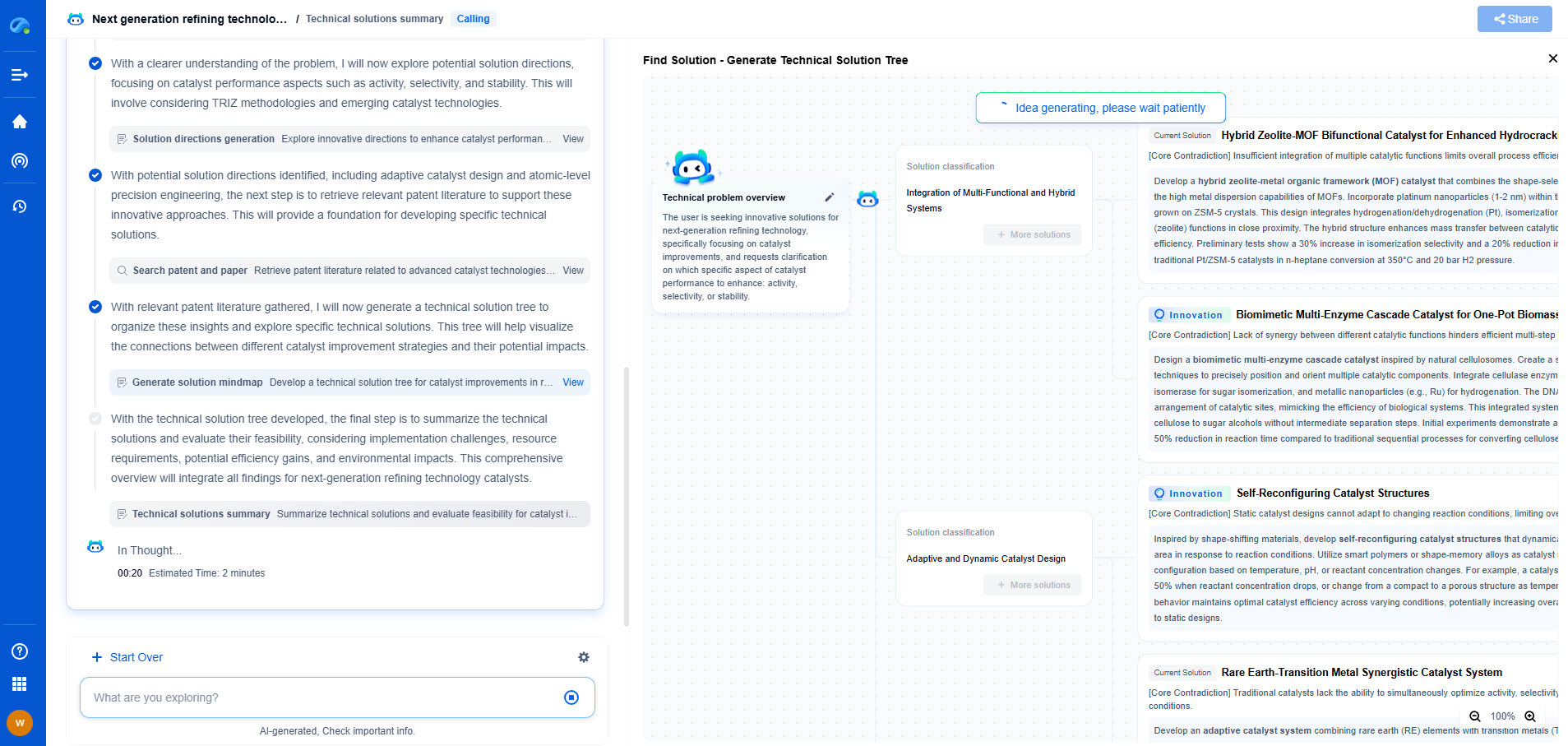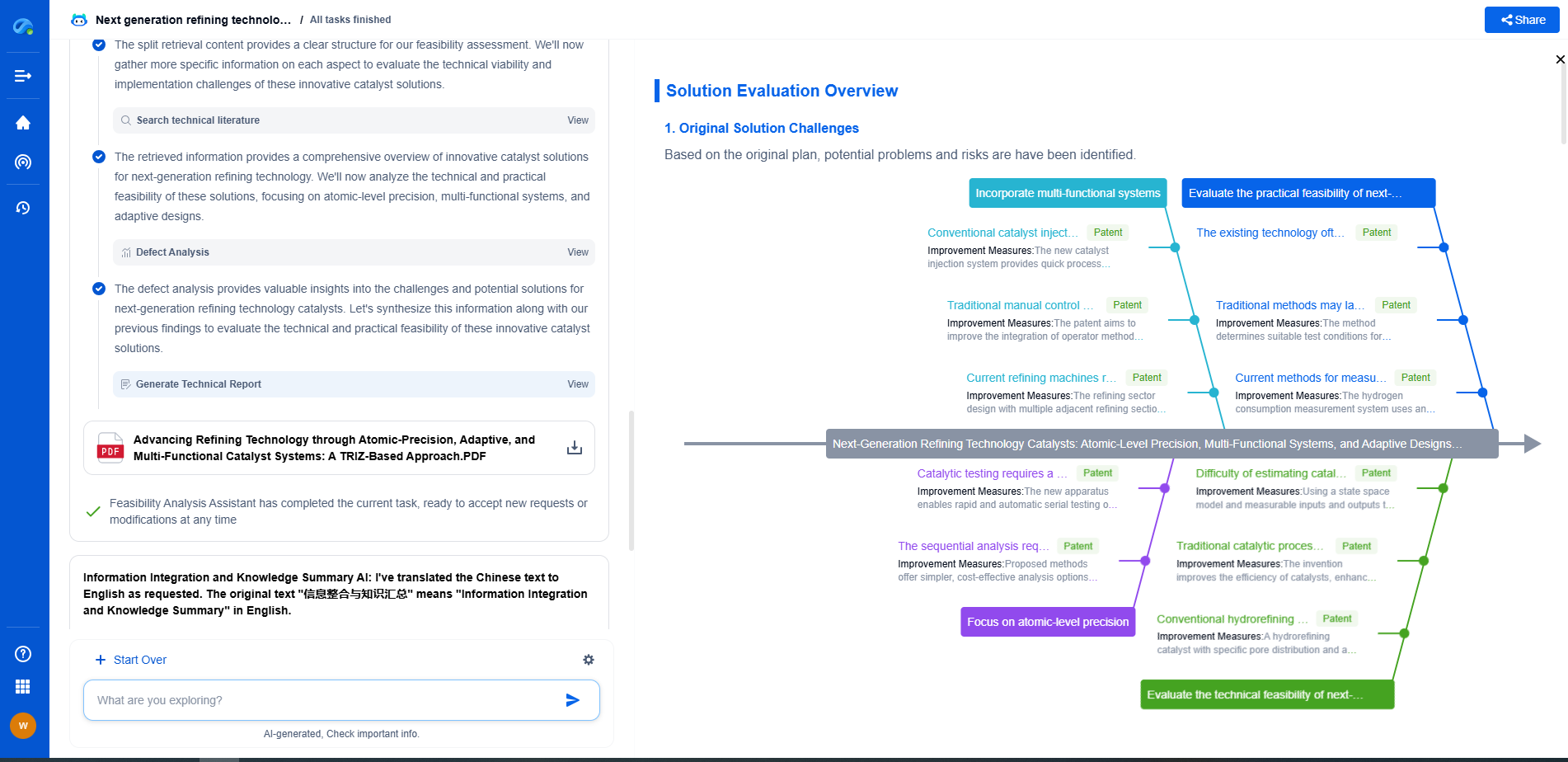Strain Gauge vs. Load Cell: Which Force Sensor Is Better for Your Application?
JUL 14, 2025 |
In the realm of force measurement, understanding the distinction and applications of strain gauges and load cells is pivotal. Both play crucial roles in various industries, from automotive and aerospace to manufacturing and construction. However, selecting the right sensor depends largely on the specific requirements of your application. This article delves into the operational principles, advantages, and limitations of each sensor type to help guide your decision.
What is a Strain Gauge?
A strain gauge is a sensor whose resistance varies with applied force; it converts force, pressure, tension, weight, etc., into a change in electrical resistance, which can then be measured. The most common type of strain gauge consists of an insulating flexible backing that supports a metallic foil pattern. As the object deforms, the foil deforms, causing its electrical resistance to change. This change in resistance is proportional to the strain experienced by the object.
Advantages of Strain Gauges
Strain gauges offer high precision and are capable of measuring minute deformations. They are versatile and can be attached to various surfaces, including beams, bridges, and machinery, making them ideal for structural health monitoring. Due to their adaptability, strain gauges can be customized to fit different shapes and sizes, allowing them to measure strain in complex structures.
Limitations of Strain Gauges
Despite their precision, strain gauges require careful calibration and installation. Their sensitivity to environmental factors such as temperature and humidity can affect readings, necessitating appropriate compensation techniques. Additionally, strain gauges are generally not suitable for dynamic applications involving rapid force changes, as they are primarily designed for static measurements.
Exploring Load Cells
Load cells are transducers that convert force into an electrical signal. This conversion is achieved through the deformation of an internal component within the load cell, typically a strain gauge, piezoelectric material, or hydraulic fluid. The most common type is the strain gauge load cell, which leverages the same resistance principle as standalone strain gauges but in a more integrated and robust package.
Advantages of Load Cells
Load cells are renowned for their accuracy and reliability in measuring force and weight. Their robust construction allows them to endure harsh environments and dynamic loads, making them ideal for industrial applications such as weighing systems, material testing, and force measurement in production lines. Furthermore, load cells can handle a wide range of force magnitudes, from a few grams to several tons, providing versatility for diverse applications.
Limitations of Load Cells
While load cells offer excellent performance, they are typically more expensive than standalone strain gauges. The integration of load cells into existing systems can also be more complex due to their size and weight. Moreover, like strain gauges, load cells can be sensitive to temperature changes and may require compensation for accurate readings.
Strain Gauge vs. Load Cell: Application Considerations
Selecting between a strain gauge and a load cell depends on several factors, including the nature of the force measurement, environmental conditions, budget constraints, and integration requirements.
For applications requiring high precision in measuring small deformations or stress analysis in structures, strain gauges are often the preferred choice due to their flexibility and sensitivity. They are particularly useful in research and development settings, where customized solutions are frequently needed.
In contrast, load cells are better suited for applications demanding robust performance, ease of integration, and dynamic force measurement. Industries relying on consistent and accurate weight measurements, such as logistics, agriculture, and manufacturing, benefit significantly from the reliability and durability of load cells.
Conclusion: Making the Right Choice
Ultimately, the decision between a strain gauge and a load cell hinges on your specific application needs. Consider the measurement range, environmental factors, required precision, and budgetary constraints when making your choice. Both sensors have their unique strengths and potential limitations, and understanding these will ensure that you select the most appropriate and effective force measurement solution for your application.
From 5G NR to SDN and quantum-safe encryption, the digital communication landscape is evolving faster than ever. For R&D teams and IP professionals, tracking protocol shifts, understanding standards like 3GPP and IEEE 802, and monitoring the global patent race are now mission-critical.
Patsnap Eureka, our intelligent AI assistant built for R&D professionals in high-tech sectors, empowers you with real-time expert-level analysis, technology roadmap exploration, and strategic mapping of core patents—all within a seamless, user-friendly interface.
📡 Experience Patsnap Eureka today and unlock next-gen insights into digital communication infrastructure, before your competitors do.
- R&D
- Intellectual Property
- Life Sciences
- Materials
- Tech Scout
- Unparalleled Data Quality
- Higher Quality Content
- 60% Fewer Hallucinations
Browse by: Latest US Patents, China's latest patents, Technical Efficacy Thesaurus, Application Domain, Technology Topic, Popular Technical Reports.
© 2025 PatSnap. All rights reserved.Legal|Privacy policy|Modern Slavery Act Transparency Statement|Sitemap|About US| Contact US: help@patsnap.com

